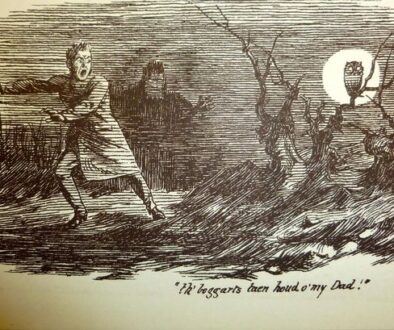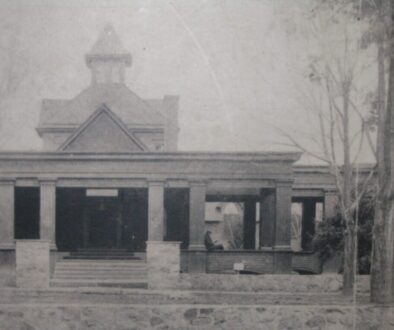The Black Creek Who-dat
The common term for a significant period of hysteria about some kind of typically paranormal subject is flap. I’ve seen flaps about upstate New York involving UFOs, Men-in-Black, cases of suspected possession, violent hauntings, paranormal zones, earthly vortexes, lake-lizards, religious miracles, active curses, and surely other things I’ve forgotten to mention. Flaps tend to start up based on an alleged encounter or experience, develop a cult-following, and hold onto to a lot of human attention for an extended period. Then, typically, they just lose momentum and fade out. Sometimes they reawaken years or even decades later. Maybe the stuff just stops happening and then starts up again.
The upstate has hosted a number of Bigfoot-flaps in the second half of the 20th century. One of the most definitive happened about the Allegany County town of Black Creek for a stretch of the mid-1970’s.
Black Creek, NY, is a small Allegany County town about five miles northeast of Cuba. It’s got a lot of open land cleared for farming, but most of the rest of it – undeveloped and wooded –brims intrigue. There are a number of large tracts of preserved wetlands and forests. The whole region, in fact, at the dead-center of Western New York, the Seneca Nation’s historic territory, is proverbial for mystery-critters and other woody paranormals. Here we’ll dwell on just one of them.
The flap around what I call “The Black Creek Whodat” started in 1973 when some Cuba high schoolers built a cabin on open land. Overnighters were routine, and almost from the first there were unsettling noises – like feet running around the cabin, eventually heading off into the nearby swamp. Dogs often chased and never caught them. So far it sounds like a legendary Longhouse bogie called “the Legs,” though this pair had something on them.
One night in 1975 a camper took a walk. By a fence he looked up and saw it: humanoid, tall and – what may seem odd to you – white. Kid and critter made eye contact, then split, one into the brush (“at astonishing speed,” as a reporter observed) and the other back to the cabin, little slower.
Years after the lad’s three friends would recall his streaming tears, but at the time they were unimpressed. The panicked camper headed home in his truck. The others slept, and laughed when something banged and shook the cabin an hour later, presuming it their missing mate. At daylight the joke was over. Their cabin had visible dents. They visited the boy’s house. He’d gone home and stayed.
In the year that followed, the region of Spring Valley Road hosted many strange reports. Big white “things” were spotted in the woods and in car headlights, and few dogs would chase them. People felt watched when they were outside. A strange horrible smell surrounded a barn full of terrified livestock. (“Their eyes were just fire,” said a witness.) A mutilated calf was found outside. Hunters scoured the region, but the swamp – in which beeping noises and strange lights were rumored – was nearly impenetrable.
Even the local papers were into the act. A number of articles were written about the flap, though the nickname, “Black Creek Who-dat,” is mine.
As with any paranormal report, there’s the chance that Black Creek’s white Bigfoot is all make-believe. No direct physical evidence of it was ever found, and people were clearly fishing for things to add to the story, the folkloric “piling on” effect. For those who’ll listen further, the beastie has paranormal possibilities:
An extraterrestrial: The sounds and lights rumored of the marshy area that could have been its home are fixtures of UFO tales.
A ghost: It was pale, fitful, and supernaturally elusive.
A honky-ass bigfoot: It was big, white – and stinky. Also linked with killed livestock and rattled cabins, the fiendishly fragrant Bigfoot is in some quarters called “The Skunk Ape.”
The last reported sighting of the Black Creek Whodat was in the spring of 1976. At three in the morning two young men camping in a pickup truck woke to hear themselves circled by footsteps, which ominously stopped. Someone opened the back door of a nearby house and a dog tore out howling. The young men came out of the truck and saw the apparition – way too fast to be human – outracing the dog to the woods. After that, the sightings and all other reports simply stopped, and Black Creek’s beige Bigfoot retreated into its own legend. It’s been two decades since the contentious cabin burned and its site was cultivated and cleared.
One thing that may seem surprising to you is the hue of this reported figure – pale. While that might surprise me, too, if I were expecting the blastie to be a natural critter making a home for itself in the Northeastern woodlands, I have to point out that in the realm of paranormally-inspired apparitions, the unpredictable tends to be the norm.
I notice another connection. The Pennsylvania researcher Stan Gordon has made an excellent study of the connection between UFO-reports and Bigfoot-sightings. They are associated in time, they are associated in place, and sometimes they are even associated in the direct reports of eyewitnesses. Yes! Witnesses – some – say they see an apparent relationship between the big hairy and what they presume to be an extra-terrestrial craft and/or the apparent breach in the realms by which the two of them enter and exit.
My Algonquin friend Michael Bastine tells me that many Native Americans suspect that Bigfoot may be “an interdimensional being.” It drifts in and out of our realm just long enough to be now and again seen. That makes as much sense as any other theory I’ve heard. Why do you think nobody’s ever caught one?




